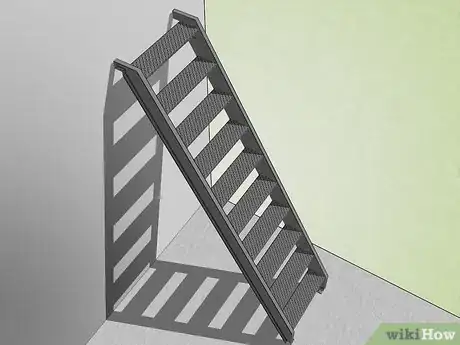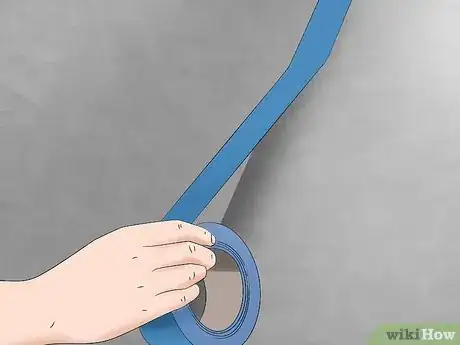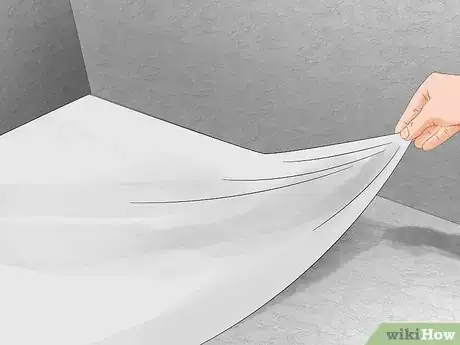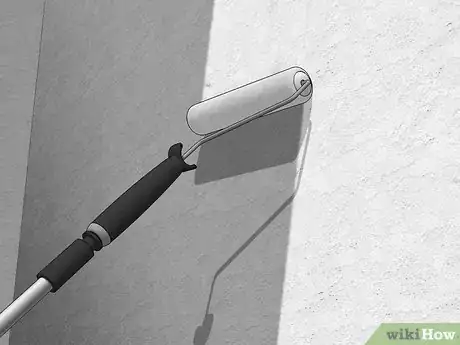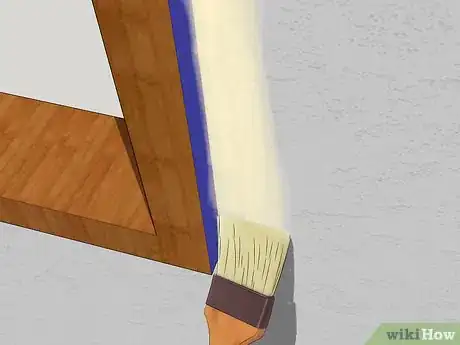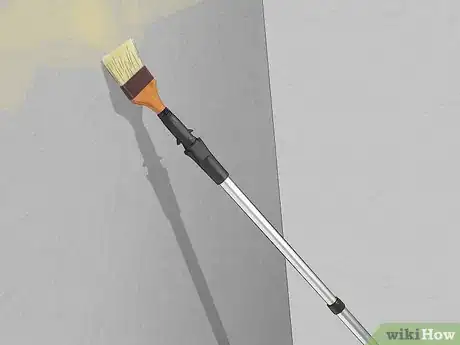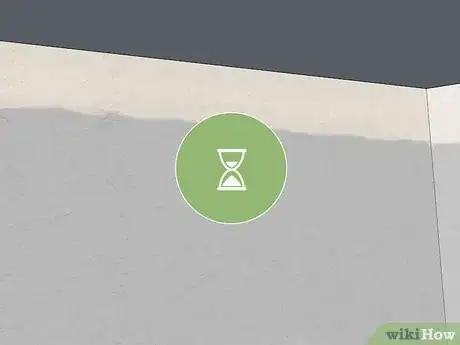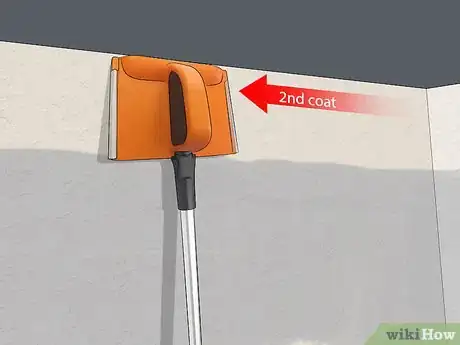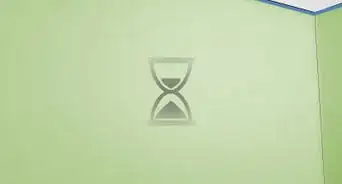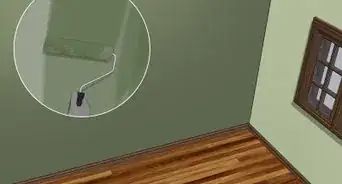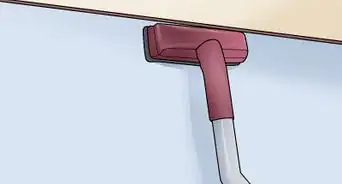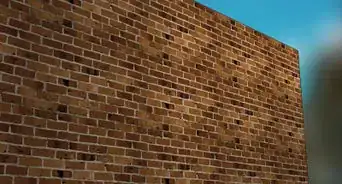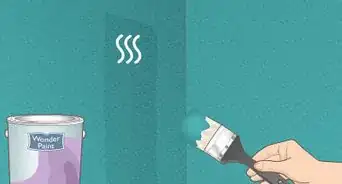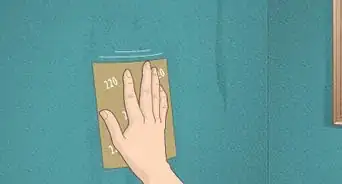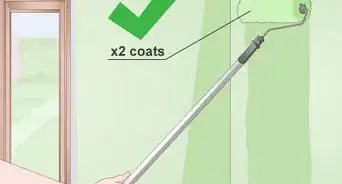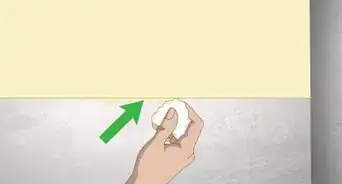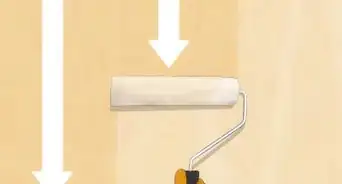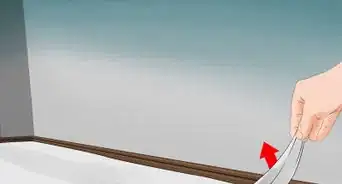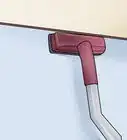This article was co-authored by Patrick Coye. Patrick Coye is the owner and operator of Patrick’s Painting & Home Improvement in Alexandria, Virginia. With over 15 years of experience in residential construction, Patrick specializes in painting, wallpaper removal/installation, drywall, staining decks and fences, and kitchen cabinetry painting. To date, Patrick and his team have painted over 2,000 houses and stained over 800 decks. Patrick's Company won a "Top Job" award from the American Painting contractor magazine in 2020.
This article has been viewed 32,693 times.
You've picked out a new paint color, gathered your painting materials, and are ready to start. But with such tall walls, what's the best way to paint them efficiently and safely? By using tools such as an extension pole and paint roller, painting your tall walls becomes a lot easier. There are many painting strategies to help you prepare and paint your walls, no matter their height.
Steps
Priming the Walls
-
1Find a paint extension pole and roller that are compatible. Extension poles are the key to successfully painting tall walls. Purchase or rent an extension pole from your local hardware store or online, and find a paint roller that will screw into it. Extension poles cost anywhere from $15-$30 with longer poles being more expensive. Paint rollers cost around $10.
- Borrowing an extension pole or roller from a friend is a good way to save money.
- For help figuring out which extension poles and rollers will work best together, ask an employee at a hardware store or do some research online.
-
2Set up your tall ladder. Place the bottom of the ladder firmly on the ground and position it against the wall carefully. How long the ladder needs to be will depend on how tall your walls are, but choosing an extension ladder is always a good idea. Make sure the ladder's safety features are working properly.
- If you don’t have a tall ladder, ask friends, neighbors, or coworkers if they have one you can borrow.[1]
- You can also call your local hardware store and ask them if you can rent a ladder for the day.
Advertisement -
3Use spackling paste if the wall has holes or rough spots. If your walls have nail holes or other small imperfections, apply a spackling compound to the hole. For tiny holes, apply a small amount of spackle to the hole and smooth it with your finger. For larger holes, level the spackle with a putty knife. After the paste dries, gently sand the spot so that it’s smooth.[2]
- Use a tall ladder to spackle spots that are out of your reach.
- Read the tube of spackling paste to know how long it will take to dry.
- After you’ve sanded it down, you can use a damp rag to wipe off the dust.[3]
-
4Apply painter’s tape to edges of walls if desired. If you don’t want to have to worry about painting in a straight line, put painter’s tape along the edges of the wall. Use a tall ladder to tape the very top edges. Be careful and tape slowly, making sure the tape is even and firmly pressed down.
-
5Put down a drop cloth to protect the floors.[4] Paint brushes, rollers, and edgers can all be messy, especially when attached to an extension pole. To ensure primer or paint doesn't get on the floor, spread out a drop cloth. Make sure the cloth reaches all the way to the wall's edge.
- You can also use a drop cloth to cover any furniture in the room that isn't able to be moved.
-
6Prime your walls if necessary. Primer is useful when painting over a dark color or damaged wall, as well as in many other situations.[5] There are many different primers made for certain scenarios, so go online or ask an employee at a hardware store if your walls need a primer.[6]
- Attach your paint brush or roller to an extension pole to prime the tall parts of your wall.
- Let the primer dry before beginning the rest of the painting. Check your can of primer to see how long it will take to dry completely.
Cutting In
-
1Cut in the edges of the walls, doors, windows, or trim. Painting all of the edges in the room, also known as “cutting in,” should be done before painting the walls entirely. Use an angled paint brush to carefully paint the corners and edges.
- When cutting in, paint a strip along the edge that is 2 inches (5.1 cm) to 3 inches (7.6 cm) wide.
-
2Attach the paint brush to the end of an extension pole to reach tall spots. To reach the top corners of your tall wall, use strong tape to attach your brush to the extension pole. The pole should be long enough that you can paint without having to use a ladder.
- If there's edging that needs to be done using a tall ladder, have someone hold the ladder while you're at the top for safety.
-
3Use an edger attached to an extension pole for clean lines. Paint edgers can be used with an extension pole or by themselves, and they're great for painting clean, straight lines without using tape. Simply slide the edger along the wall's edge, and it should apply paint in a clean line without getting paint on the opposing wall.
- You can buy an edger at your local hardware store or online, and they usually cost less than $10.
-
4Wait 4 hours for the edges to dry. How long it takes the paint to dry will depend on the type of paint you're using. In most scenarios, your paint should be mostly dry after 1 hour, and the walls should be ready for a second coat after 4 hours.[7]
-
5Apply the second coat of edging. After the edges you painted are all dry, it's time to add a second coat. Try to paint nice, even coats so that you won't have to go back up the ladder to do touch ups later on.[8]
Applying the Paint
-
1Attach your paint roller to an extension pole. Once your roller is ready for use after sliding the roller cover onto the roller frame, attach it to an extension pole. The bottom of most rollers are able to screw onto the extension pole, making attaching it very simple.[9]
-
2Paint the wall beginning at the top and working your way down. Dip the roller in paint, making sure to evenly cover all sides of the roller. Place the roller at the top of the wall and roll it gently down, painting the highest point of the wall and working your way to the bottom. Do this until the wall is entirely covered in an even paint layer.[10]
- If your extension pole is long enough, you shouldn’t need to use the ladder at all.
-
3Let the paint dry for at least 4 hours. While all paints are different, most should be dry after 4 hours. The time it will take the paint to dry will depend largely on the type of paint and how thickly it was applied, so read your can of paint for a more specific drying time.[11]
- To make the paint dry faster, turn on a fan or the air conditioning. Humidity or moisture in the air will make the paint dry more slowly, so close windows if it's humid or wet outside.
-
4Apply the second coat of paint to the walls. Paint the second coat just like the first one, starting with your paint roller at the top of the wall and working your way down. Be thorough and methodical in your application of the paint to avoid missing any spots.[12]
- Just like the first coat, you shouldn't need to use the ladder if your extension pole is long enough.
- To get rid of paint fumes, open windows or doors.
Expert Q&A
-
QuestionHow can I protect my floor when painting tall walls?
 Patrick CoyePatrick Coye is the owner and operator of Patrick’s Painting & Home Improvement in Alexandria, Virginia. With over 15 years of experience in residential construction, Patrick specializes in painting, wallpaper removal/installation, drywall, staining decks and fences, and kitchen cabinetry painting. To date, Patrick and his team have painted over 2,000 houses and stained over 800 decks. Patrick's Company won a "Top Job" award from the American Painting contractor magazine in 2020.
Patrick CoyePatrick Coye is the owner and operator of Patrick’s Painting & Home Improvement in Alexandria, Virginia. With over 15 years of experience in residential construction, Patrick specializes in painting, wallpaper removal/installation, drywall, staining decks and fences, and kitchen cabinetry painting. To date, Patrick and his team have painted over 2,000 houses and stained over 800 decks. Patrick's Company won a "Top Job" award from the American Painting contractor magazine in 2020.
Painting Specialist You can use a plastic drop cloth. These are much better than just a regular drop cloth because paint will not bleed through a plastic drop cloth. It also prevents dust from getting through, which makes cleanup easier. If they're brand new floors and you really need them protected well, you might want to think about using cardboard flooring.
You can use a plastic drop cloth. These are much better than just a regular drop cloth because paint will not bleed through a plastic drop cloth. It also prevents dust from getting through, which makes cleanup easier. If they're brand new floors and you really need them protected well, you might want to think about using cardboard flooring.
Warnings
- Ladders can be dangerous if not used properly. Follow the safety instructions and don't use a ladder if you're worried you might hurt yourself. Always try to have an extra person with you to hold the ladder while you're using it.⧼thumbs_response⧽
Things You'll Need
- Paint
- Tall ladder
- Extension pole
- Paint brush
- Cup for paint
- Drop cloth(s)
- Paint pan and roller
- Spackle (optional)
- Putty knife (optional)
- Sandpaper (optional)
- Painter's tape (optional)
- Extra person to hold ladder (advised)
References
- ↑ http://providenthomedesign.com/2016/05/20/the-secret-to-painting-tall-walls/
- ↑ http://homeguides.sfgate.com/fill-finishing-nail-holes-before-painting-44715.html
- ↑ Patrick Coye. Painting Specialist. Expert Interview. 22 July 2020.
- ↑ Patrick Coye. Painting Specialist. Expert Interview. 22 July 2020.
- ↑ Patrick Coye. Painting Specialist. Expert Interview. 22 July 2020.
- ↑ http://providenthomedesign.com/2016/05/20/the-secret-to-painting-tall-walls/
- ↑ http://providenthomedesign.com/2016/05/20/the-secret-to-painting-tall-walls/
- ↑ http://providenthomedesign.com/2016/05/20/the-secret-to-painting-tall-walls/
- ↑ http://providenthomedesign.com/2016/05/20/the-secret-to-painting-tall-walls/
- ↑ http://providenthomedesign.com/2016/05/20/the-secret-to-painting-tall-walls/
- ↑ http://providenthomedesign.com/2016/05/20/the-secret-to-painting-tall-walls/
- ↑ http://providenthomedesign.com/2016/05/20/the-secret-to-painting-tall-walls/
- ↑ https://www.uglyducklinghouse.com/paint-a-tall-hallway-above-stairs/

